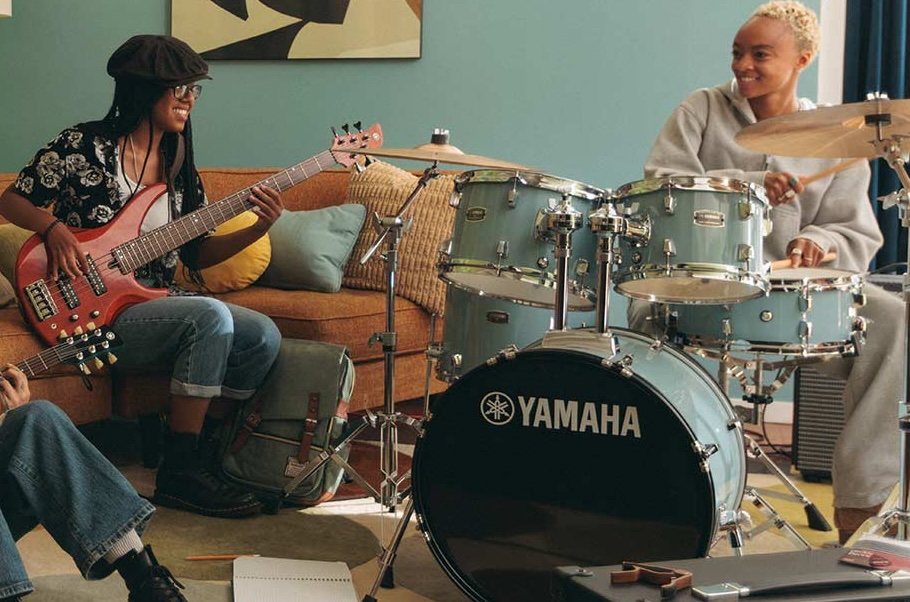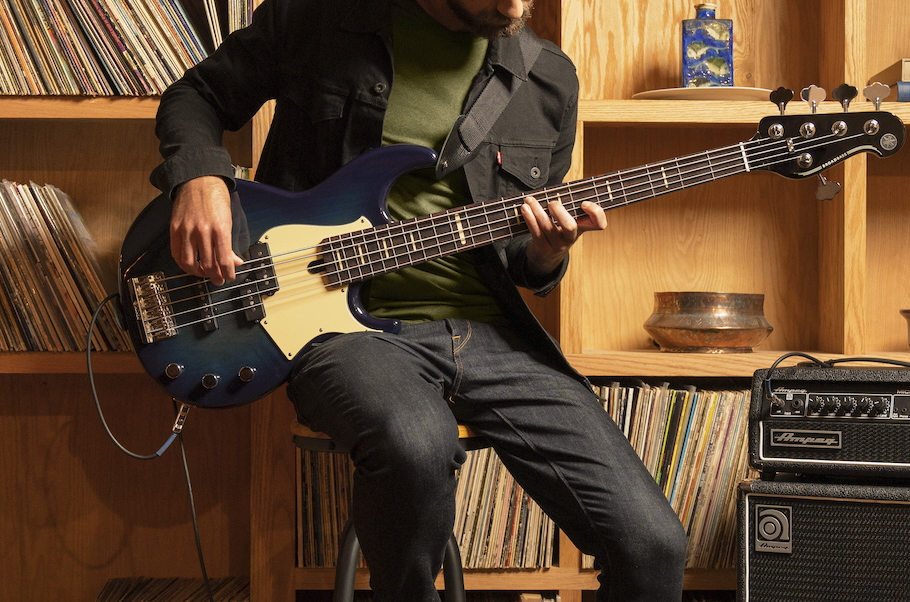Authentic Bass Playing
How to adapt your style to different musical genres.
What is it that makes a bassline rock, funk, country?
As a bass player, your relationship to harmony (usually outlined by guitar or keyboard), along with rhythm and time (dictated by the drummer), is always paramount. However, every genre has its own set of basic guidelines that help you step into its particular musical universe. Knowing these core values will make you a more versatile bass player.
Let’s take a look at — and a listen to — a few of them.
ROCK CITY
When it comes to rock music, if you can play with a pick and lay down the root of the chord in time with the drummer, you’re off to a great start. Playing right on the beat (or slightly ahead of it) is desirable, and doubling guitar riffs an octave below is a big part of the gig. If there’s movement between chords, it’s less likely to be scalar and more likely to be about approaching notes from one or two frets below the tonic of the next chord.
Clarity is more important here than low end; a thinner, more aggressive sound allows you to be heard over and underneath masses of guitars and layered keyboards. Billy Sheehan and Peter Hook are two good examples of trailblazing rock bassists, each taking unique and instantly recognizable approaches to the genre. Their signature Yamaha basses are specifically designed to give you quick access to the tones Sheehan and Hook are so famous for.


The audio clip below is played on a Yamaha TRBX174EW with both pickups on. Notice how the broken eighth-notes on the root in the verse are contrasted with the steady eighths played in the chorus.
BLUESVILLE
Blues bass patterns are easily identifiable (and thus, easier to understand) in terms of their typical 1-4-5 chord progression. A solid grasp of the major and minor pentatonic shapes — the so-called “blues box” — will get you far. Get comfortable with playing the same pattern over and over, finding small details to change on each chorus, then switch to a new bassline when the solos begin; it’s all about chord tones, walk-ups and walk-downs. One of the hallmarks of a blues bass pro is a mastery of “turnarounds” — the many ways the chords go back to the top of the pattern. You will also need to be firmly wedded to the kick drum at all times.
In this next example, played on a Yamaha BB435 with both pickups wide open and the treble rolled off, listen to how the bass is playing a 12-bar chorus by outlining 1-3-5-6 or root-octave-flatted 7-5 changes.
FUNKYTOWN
The phrase “funkin’ on the one” is a reminder of just how important that first downbeat is in funk and soul — even though the inherently syncopated nature of the music means that the bass often doesn’t land on the other downbeats. And while a rock gig will expect you to be on top of (or ahead of) the beat, funk expects you to lay back “in the pocket.” You can get lots of mileage out of the root, 3rd, 5th, flatted 7 and octave, but harmonically astute lines use the 4th, 6th and 9th, as well.
Fat, round fingerstyle tone is king here, although slapping and thumb/palm mute techniques are just as crucial. One of the most important tools of a funky bass player is note duration: Using muted ghost notes and other short duration notes adds a particularly funky spice. Yamaha BB Series basses (especially the 5-string Yamaha BBNE2 Nathan East signature model, if your budget can stretch to it) are all excellent choices for slapping and other essential funk playing techniques.

This next audio clip, played on a Yamaha BB435 with both pickups and tone wide open, presents an old-school funk in the key of A minor. Check out the use of space, call and response with the other instruments, slapping and double-stops on the flatted 7th and 6th intervals.
ISLAND TIME
An effective reggae groove is all about space, chord tones and offbeats, but learning to lay back is the number one priority here. Think of the “skank” (the offbeat usually played on keys or guitar) as the “one.” Once you’re in the zone, you’ll feel the downbeat with conviction, although you may not necessarily want to be playing it. Many of the great reggae basslines are incredibly simple, too, consisting of chord tones (1-3-5, 1-5-octave and others) played in a melodic fashion that you can almost sing or hum.
For the fullest, fattest tone, cut your treble, boost the bass, and try playing on the lowest strings almost exclusively, where the boom factor is highest. If your instrument has dual pickups, use the neck one only. Here, a five-string bass such as the Yamaha BB435 is ideal since it allows you to go super-low.

That’s the bass I’m playing in this next audio clip, using just the neck pickup with the tone knob turned completely clockwise to roll off all the high end.
GOIN’ UP THE COUNTRY
To instantly conjure up a country flavor, play a root-fifth bassline, stay in the first four frets of the neck, keep it simple, and lock in with the kick drum. Many country bass parts consist of basic chord tones only (1-5 or 1-4-5, with perhaps an added 6 in the bridge). Verses and choruses often use the same chords, but you can make them feel different by moving between staccato for verses and legato for choruses (or vice versa).
Your tone should be big and full, a subliminal reminder of the upright bass. This next audio clip was played on a Yamaha BB435 with both pickups employed, but with the tone rolled off. Here, the bass plays a two-note-to-the-bar pattern, sticking to the root and fifth, almost always going down to the fifth and back up to the root (unless the figure is root-fifth-octave or vice versa). That root-fifth motion is contrasted by scalar walk-ups or walk-downs, most commonly found on the V chord back to the tonic chord.
In many ways, these examples are from a time when genres seemed more easily definable. Today, styles of music blend together smoothly (and sometimes not so smoothly), and there are dozens of subgenres that mix and match. Most rock bass players, for example, have a passing familiarity with funk and blues, just as modern country includes plenty of rock and hip-hop flavor. The truth is that most musicians listen to more than one genre, and their influences bleed into each other.
Regardless of your personal taste, it’s important to study these standard approaches, and others as well (i.e., gospel, salsa, metal, etc.). Understanding the stylistic hallmarks of different genres will help you grasp and develop the essentials of each musical landscape … and will help you grow as a bassist.














